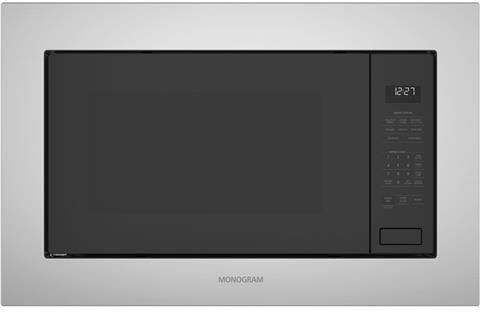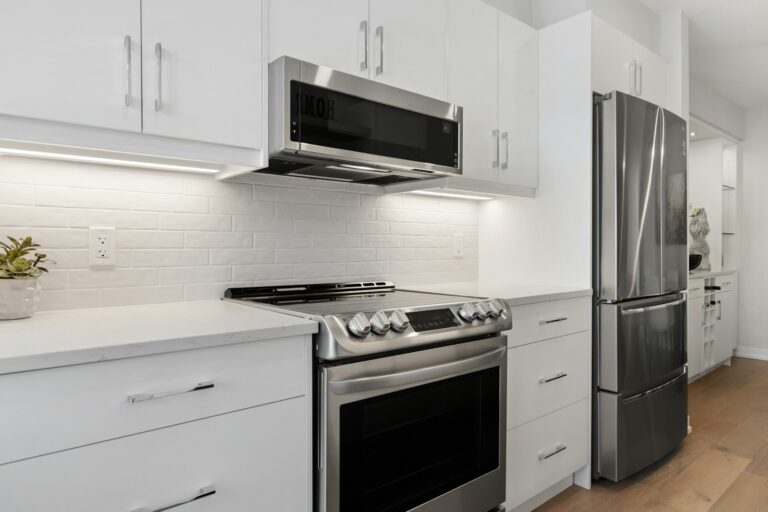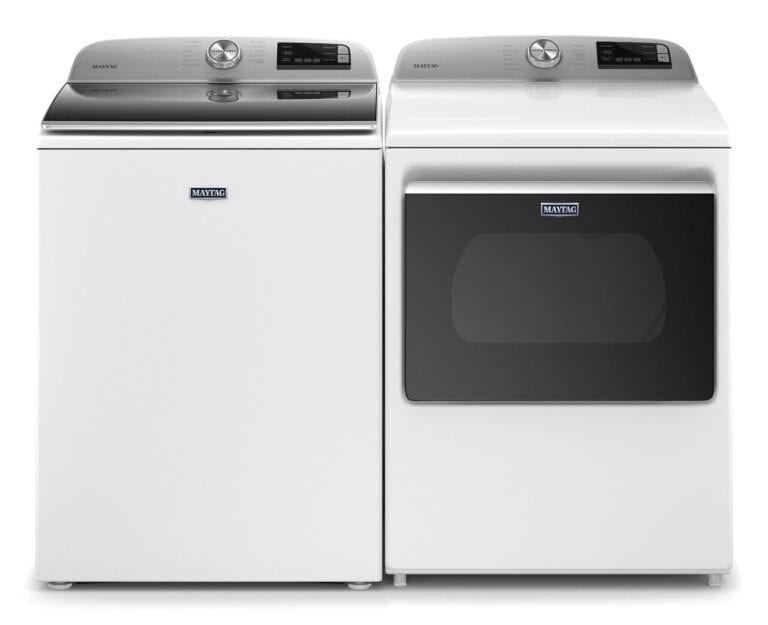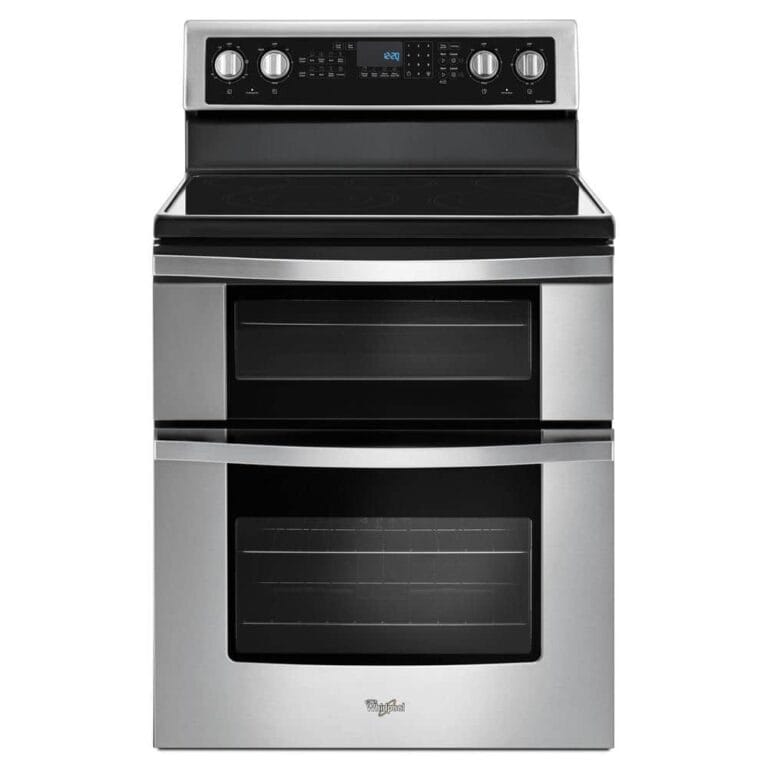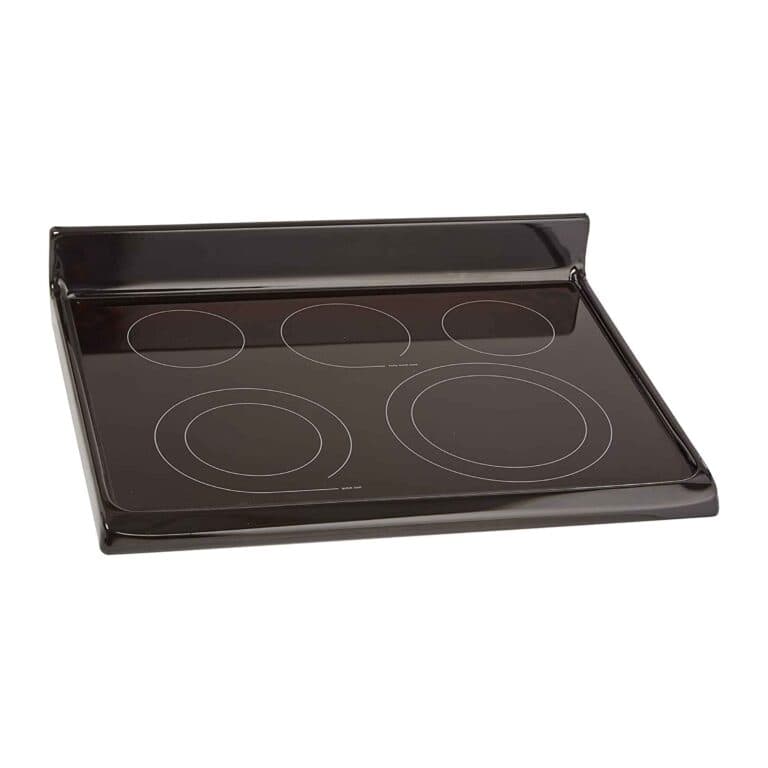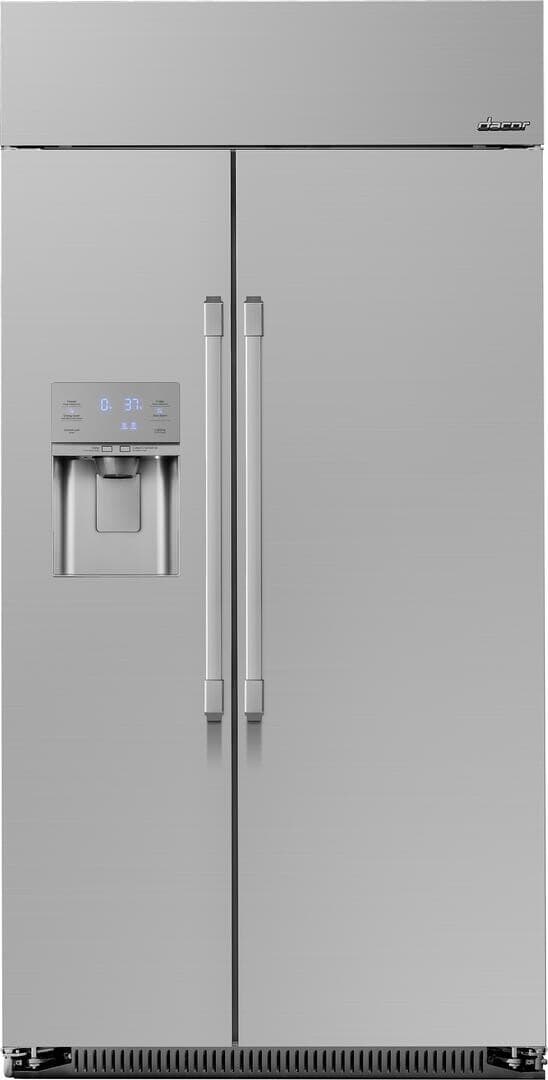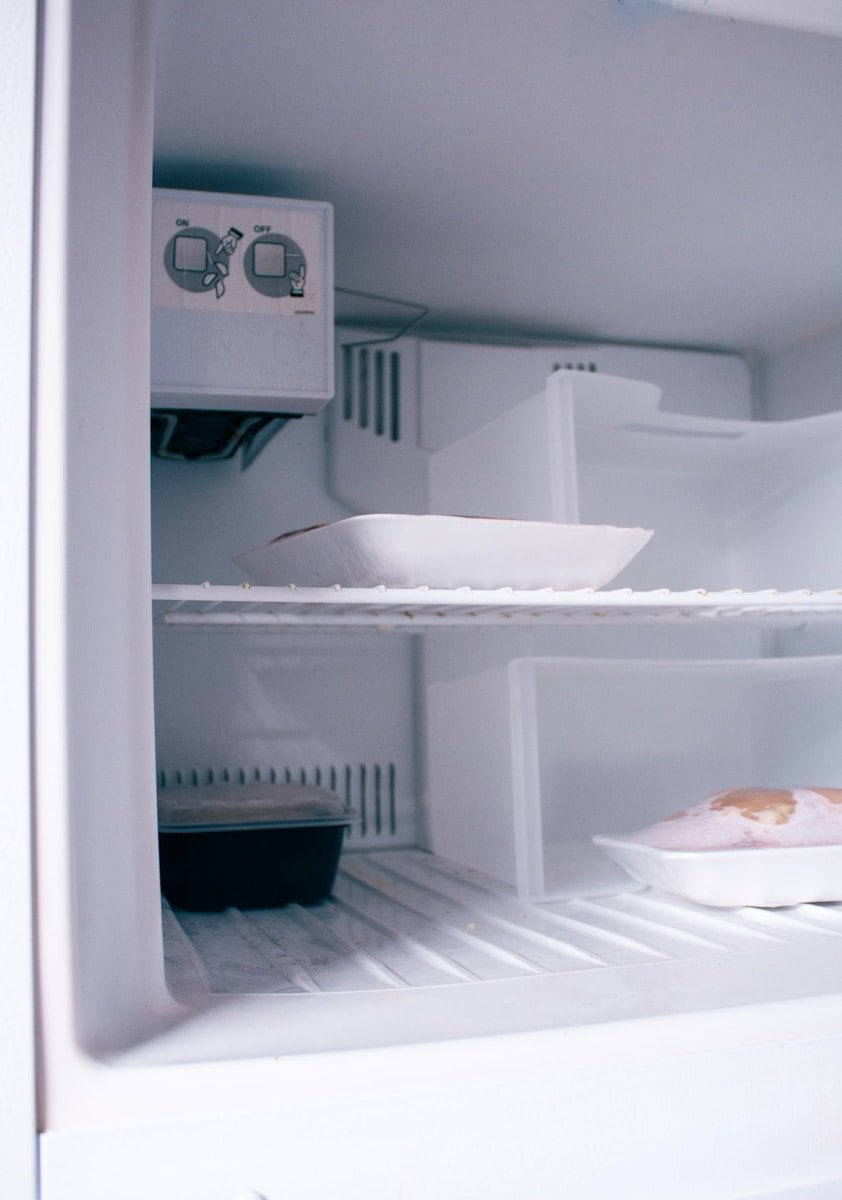
A malfunctioning ice maker can be frustrating when you’re craving a cold drink. The most common causes of a fridge not making ice include a clogged water line, faulty water inlet valve, or an issue with the ice maker assembly itself. Identifying the root cause is crucial for effective troubleshooting and repair.
Simple fixes like checking the ice maker switch, ensuring proper freezer temperature, and clearing any blockages in the ice chute can often resolve the problem. However, more complex issues may require professional intervention. Regular maintenance, such as cleaning the water filter and inspecting the fill tube, can prevent many ice maker problems.
Fridge Not Making Ice? Troubleshooting Tips
A refrigerator that’s not producing ice can be a real inconvenience. Before calling a repair technician, there are several troubleshooting steps you can take to try and fix the problem yourself.
1. Check the Ice Maker’s Power Switch
Many ice makers have a power switch, often a wire arm or a toggle switch. Make sure the switch is in the “on” position. Sometimes, the switch can get accidentally bumped or flipped, cutting off power to the ice maker.
2. Inspect the Water Supply Line
- Kinks or blockages: Ensure the water supply line connecting your fridge to the water source is not kinked or blocked. Straighten any kinks and check for any ice buildup that might be obstructing water flow.
- Water pressure: Make sure there’s sufficient water pressure. A low water pressure can prevent the ice maker from filling properly.
- Water filter: If your fridge has a water filter, check if it needs replacing. A clogged filter can restrict water flow to the ice maker.
3. Check the Ice Maker’s Water Inlet Valve
The water inlet valve controls the flow of water into the ice maker. If it’s faulty, it may not be allowing water to enter. You can test the valve by checking for continuity with a multimeter. If the valve is not receiving power or is not opening, it may need to be replaced.
4. Inspect the Ice Mold and Ejector Arm
- Ice mold: Check if the ice mold (where the ice cubes form) is blocked by ice buildup or any foreign objects. Clear any obstructions to allow for proper ice formation.
- Ejector arm: Make sure the ejector arm (responsible for pushing the ice cubes out of the mold) is not stuck or jammed. Gently try to move it to ensure it’s functioning correctly.
5. Check the Freezer Temperature
The freezer temperature needs to be cold enough for the ice maker to function properly. Ideally, the freezer should be set to 0°F (-18°C) or lower. If the temperature is too high, the ice maker may not produce ice or may produce ice that’s too soft.
6. Defrost the Freezer
Sometimes, excessive ice buildup in the freezer can affect the ice maker’s operation. Try defrosting the freezer to see if it resolves the issue.
7. Reset the Ice Maker
Some ice makers have a reset button or a reset procedure. Refer to your refrigerator’s manual for instructions on how to reset your specific model.
8. Contact Customer Support or a Technician
If you’ve tried these troubleshooting steps and your fridge is still not making ice, it’s best to contact the refrigerator manufacturer’s customer support or a qualified appliance repair technician for assistance. They can diagnose the problem and provide the necessary repairs.
Key Takeaways
- Check the ice maker switch, freezer temperature, and water supply first
- Clean the water filter and inspect the fill tube regularly for optimal performance
- Professional repair may be necessary for complex ice maker issues
Understanding Your Refrigerator’s Ice Maker
The ice maker in a refrigerator is a complex system with several components working together to produce ice. Proper assembly, installation, and temperature settings are crucial for optimal ice production.
Components of the Ice Maker
The main parts of an ice maker include the water inlet valve, ice mold, heating element, and ejector blade. The water inlet valve controls water flow into the ice mold. The ice mold holds water as it freezes into cubes. The heating element slightly warms the mold to release the ice. The ejector blade pushes the ice out of the mold and into the storage bin.
Other important components are the thermostat, which monitors temperature, and the motor, which powers the ejector blade. Some models have a shut-off arm that stops ice production when the bin is full.
Ice Maker Assembly and Installment
Proper assembly and installation are key for ice maker function. The ice maker unit attaches to the freezer wall with screws or brackets. A water line connects to the inlet valve, supplying fresh water for ice production.
Careful alignment of components during installation prevents leaks and ensures smooth operation. The wiring harness must be properly connected to provide power to the ice maker’s electrical components.
A level refrigerator is essential for even ice cube formation. Some models require manual activation of the ice maker after installation.
Freezer and Ice Maker Temperature Settings
The freezer temperature directly affects ice production. Most ice makers work best when the freezer is set between 0°F and 5°F (-18°C to -15°C). Temperatures above this range can lead to slow ice production or melting ice.
Some refrigerators have separate temperature controls for the ice maker compartment. These allow fine-tuning of ice production without affecting the rest of the freezer.
Consistent temperature is crucial. Frequent door openings or overloading the freezer can cause temperature fluctuations, impacting ice quality and production rate.
Troubleshooting Common Ice Maker Problems
Ice maker issues can often be resolved through careful inspection and simple fixes. Addressing water supply problems, examining components, and checking electrical connections are key steps in troubleshooting.
Water Flow and Water Inlet Valve Issues
Low water pressure can prevent ice production. Check the water pressure to ensure it meets the manufacturer’s specifications. A clogged water inlet valve may restrict water flow. Inspect the valve for debris or mineral buildup.
Clean or replace the valve if necessary. Test the water inlet valve with a multimeter. If it doesn’t show continuity when activated, replace it.
Ensure the water line isn’t kinked or frozen. Straighten any bends in the line. If frozen, thaw it carefully and check for leaks.
Inspecting the Ice Maker Fill Tube and Water Fill Tubes
A frozen fill tube can block water flow. Locate the fill tube at the back of the freezer. If it’s covered in frost or ice, use a hair dryer to thaw it gently.
Check water fill tubes for clogs or damage. Clear any blockages with warm water. Replace cracked or damaged tubes.
Verify the fill cup aligns properly with the water dispenser. Adjust if misaligned to ensure proper water flow.
Analyzing Ice Maker Control and Power Supply
Faulty controls can disrupt ice production. Inspect the control arm or sensor bar. Ensure it moves freely and isn’t stuck.
Check the ice maker’s power supply. Verify the ice maker is plugged in securely. Test the outlet with another appliance to confirm power.
Use a voltmeter to test for proper voltage at the ice maker. If no voltage is detected, check the circuit breaker. Reset if tripped.
Examine wiring connections for damage or loose fits. Tighten any loose connections. Replace damaged wires to restore power.
Maintenance and Care for Longevity of the Ice Maker
Regular maintenance and proper care are essential for keeping your ice maker functioning optimally. These practices help prevent issues and extend the lifespan of your appliance.
Cleaning and Upkeep of Water System Components
Clean the ice maker components every 3-6 months. Turn off the ice maker and unplug the refrigerator. Remove the ice bin and discard any remaining ice. Wash the bin with warm, soapy water and dry thoroughly.
Wipe down interior surfaces with a solution of warm water and mild detergent. Use a soft cloth to avoid scratching. Pay special attention to the ice mold and ejector blades.
Clean the water inlet valve and water lines. Remove any mineral deposits or debris that may have accumulated. This helps ensure proper water flow and ice production.
Sanitize the system by running a mixture of water and vinegar through it. Rinse thoroughly with clean water afterward.
Water Filter Replacement and Water Quality
Replace the water filter every 6 months or as recommended by the manufacturer. A clean filter ensures good water quality and prevents contaminants from affecting ice taste and appearance.
Use a genuine replacement filter compatible with your refrigerator model. Follow the installation instructions carefully to avoid leaks.
Test your water quality regularly. Hard water can cause mineral buildup in the ice maker. Consider using a water softener if necessary.
Flush the new filter before use by running water through it for about 5 minutes. This removes any loose carbon particles.
Preventing Ice Maker Blockages and Leaks
Inspect the fill tube regularly for ice buildup. If frozen, use a hair dryer to thaw it gently. Avoid using sharp objects that could damage the tube.
Check the water inlet valve for proper operation. A faulty valve can cause overflows or insufficient water supply.
Examine the ice maker’s feeler arm or sensor. Ensure it moves freely and isn’t stuck in one position. This prevents overproduction or underproduction of ice.
Keep the freezer temperature between 0-5°F (-18 to -15°C). Fluctuating temperatures can cause ice to melt and refreeze, leading to clumps.
Clean the condenser coils annually. Dust buildup can affect freezer temperature, impacting ice production.
When to Seek Professional Appliance Repair Assistance
Recognizing the right time to call in expert help for ice maker issues can save time and prevent further damage. Professional repair services offer specialized knowledge and tools to address complex problems safely and effectively.
Identifying the Need for Ice Maker Repair Service
Ice makers may stop working due to various reasons. If the ice maker produces no ice despite being turned on and having a water supply, it’s time to consider professional help. Other signs include ice with unusual taste or odor, ice that’s too small or melts quickly, or water leaking from the ice maker.
Repeated attempts at DIY fixes without success indicate a need for expert intervention. Professionals can diagnose underlying issues like faulty compressors, broken water inlet valves, or malfunctioning thermostats that may not be apparent to untrained eyes.
Unusual noises from the ice maker or inconsistent ice production are also red flags. These symptoms often point to mechanical problems that require specialized tools and expertise to resolve.
Replacement Parts and When to Replace
Ice makers contain several components that may need replacement over time. Common parts that wear out include water filters, ice molds, and ejector arms. A professional can accurately identify which parts need replacement and ensure compatibility with your specific model.
Water filters should typically be replaced every six months to maintain ice quality and prevent clogs. If ice production slows down or ice tastes odd, it might be time for a new filter.
More complex parts like evaporator plates or ice maker assemblies may also need replacement. These repairs often require dismantling the unit, which is best left to professionals to avoid damaging other components.
Safety and Precautions Before Repair Service
Before calling a repair service, take some safety precautions. Unplug the refrigerator to prevent electrical hazards. Remove any ice from the bin and turn off the water supply to the ice maker.
Document the problem by taking photos or videos. This can help the technician diagnose the issue more quickly. Make a list of any troubleshooting steps you’ve already taken.
Clear the area around the refrigerator to give the technician easy access. Remove items from inside the fridge that might obstruct access to the ice maker components.
Ensure pets are secured in another room during the repair. This prevents accidents and allows the technician to work without interruptions.
Frequently Asked Questions
Ice maker issues can be frustrating, but many common problems have simple solutions. Here are answers to some frequently asked questions about refrigerator ice makers.
Why is my ice maker running but not producing ice?
An ice maker that runs without producing ice often has a clogged water line or faulty water inlet valve. Check the water supply line for kinks or blockages. If the line is clear, the water inlet valve may need replacement. Ensure the freezer temperature is set correctly, ideally between 0-5°F (-18 to -15°C).
How can I reset my refrigerator’s ice maker?
To reset an ice maker, locate the reset button on the ice maker unit. Press and hold it for about 10 seconds until you hear a chime. For models without a reset button, unplug the refrigerator for 5 minutes, then plug it back in. This often resolves minor electronic glitches.
What causes a refrigerator to stop freezing ice?
Several factors can prevent ice from freezing. A malfunctioning thermostat or temperature control board may fail to maintain proper freezer temperatures. Dirty condenser coils can cause the freezer to run inefficiently. In some cases, a faulty compressor or low refrigerant levels may be the culprit.
What should I check if my refrigerator’s water dispenser works but it doesn’t make ice?
If the water dispenser works but the ice maker doesn’t, start by checking the ice maker’s on/off switch. Ensure the feeler arm or sensor is not stuck in the up position. Inspect the water inlet valve for proper function. A clogged water filter can also restrict flow to the ice maker while still allowing water to dispense.
What are common issues with Whirlpool refrigerators that prevent ice making?
Whirlpool refrigerators may experience ice production issues due to a faulty water inlet valve or a clogged water filter. Some models have problems with the ice maker assembly freezing up. Check for ice buildup in the ice mold and ensure the freezer temperature is not set too low.
What troubleshooting steps can I take for a Frigidaire fridge that’s not producing ice?
For a Frigidaire refrigerator not making ice, first check if the ice maker is turned on. Verify that the water supply line is connected and not frozen. Inspect the water filter and replace if necessary. If these steps don’t work, the ice maker module may need replacement or the freezer temperature might be set incorrectly.

